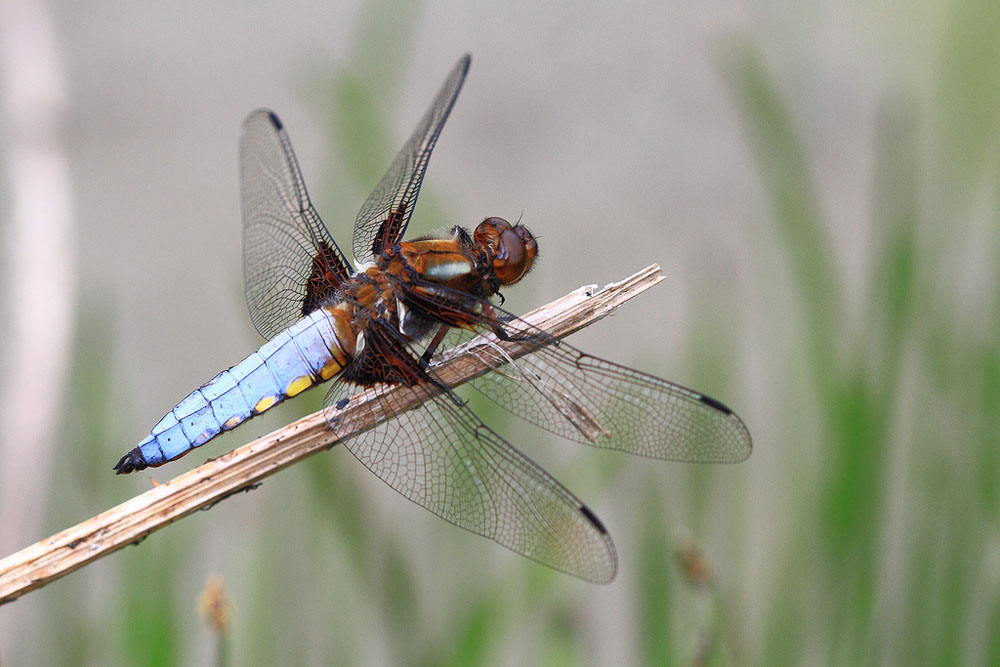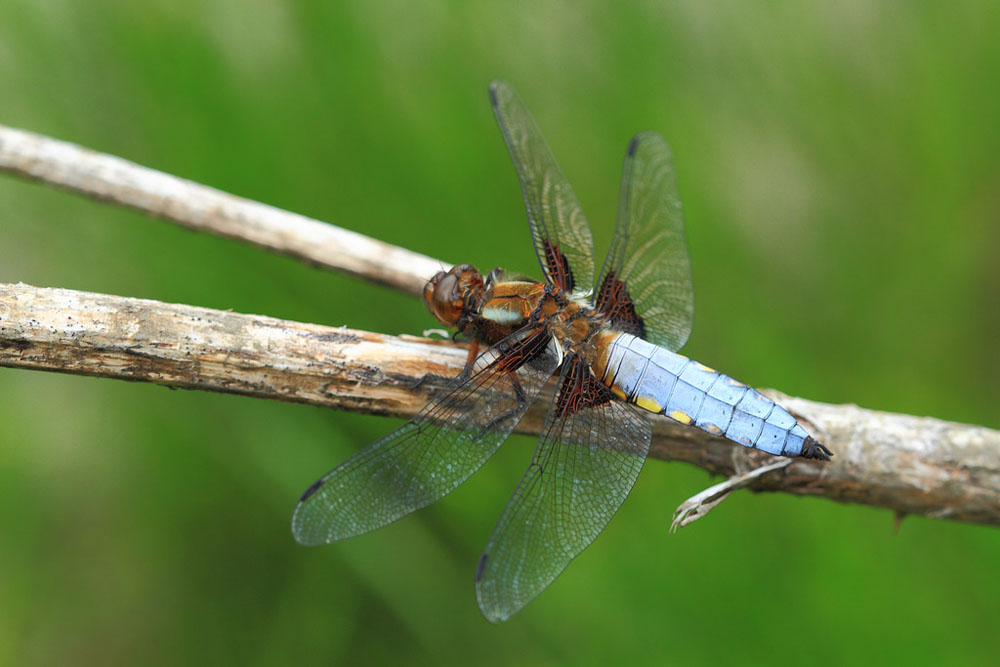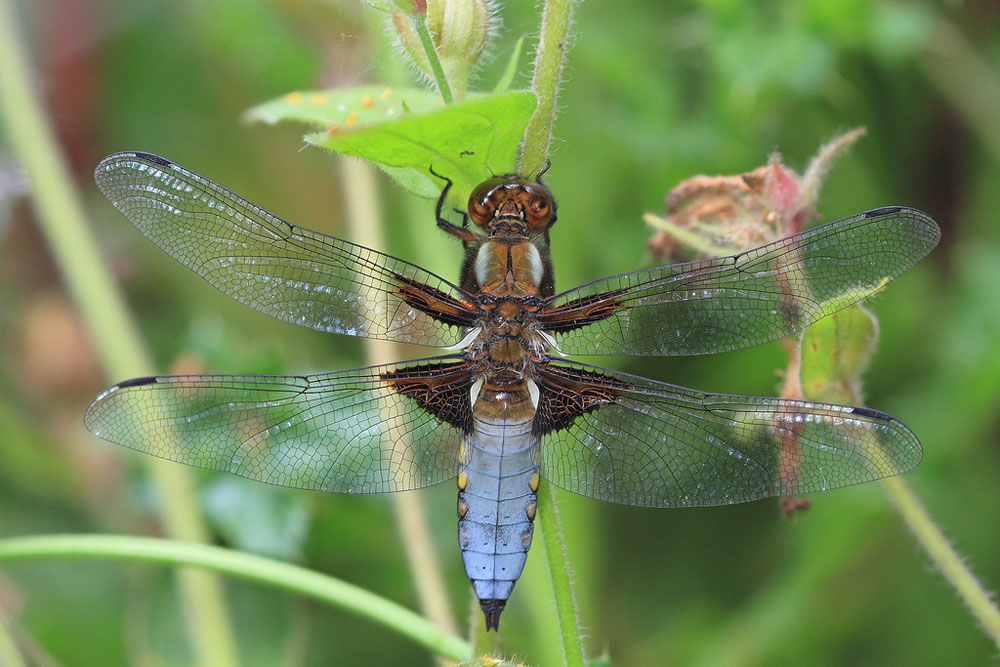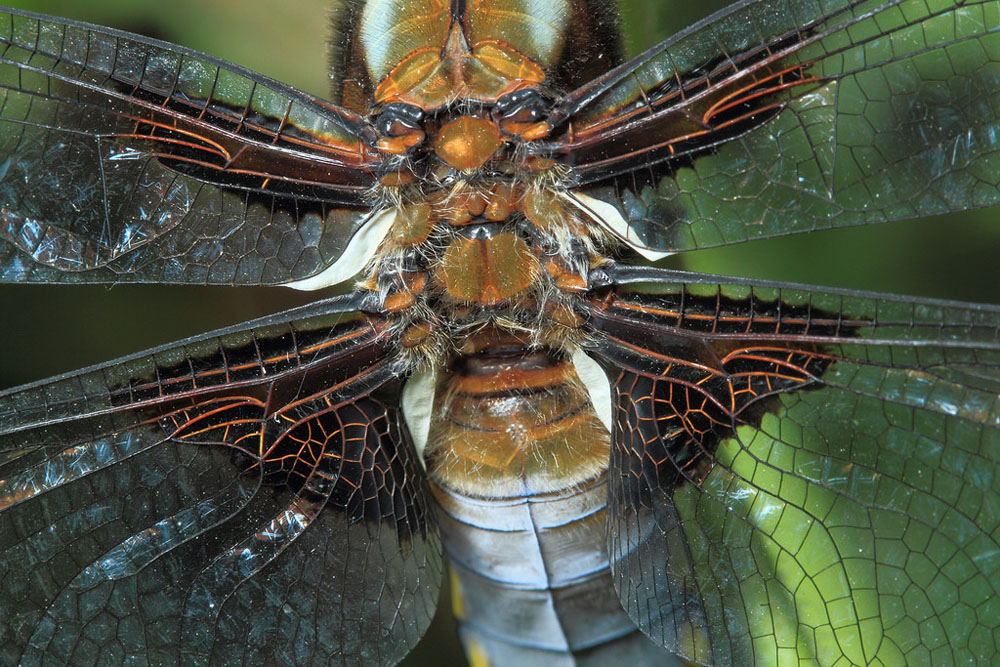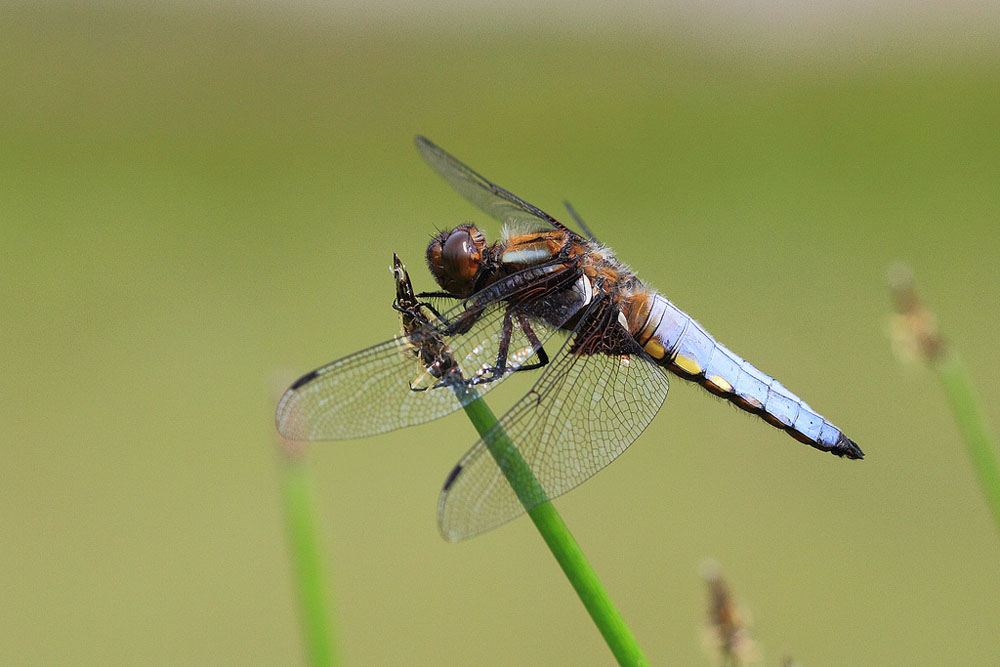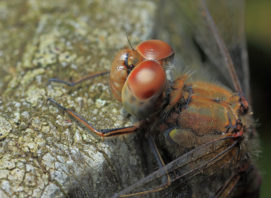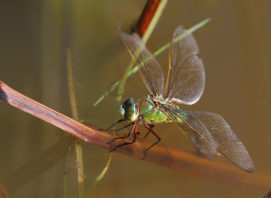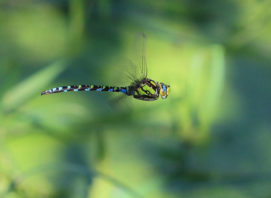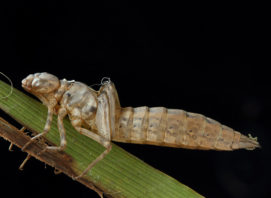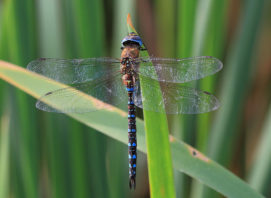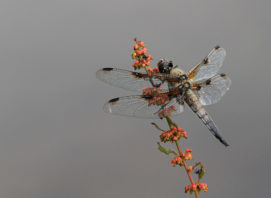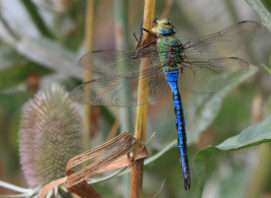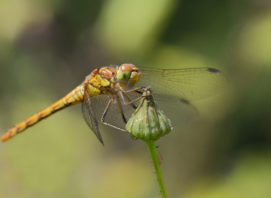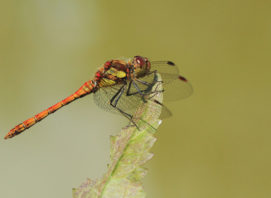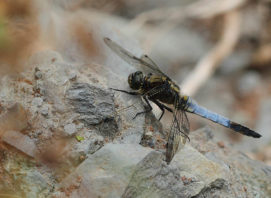Broad-bodied Chaser
Pic 1: Noticed that the Chaser would often return to his favourite perch and then dart-off in order to chase off other rival dragonflies or mate on the wing with females. I waited patiently and as sure as night follows day the Chaser returned to continue his sentinel duties. The pond embankment allowed me to get within breathing distance of him!
Pic 2: As I moved closer, the Chaser appeared either oblivious to my presence or else, and more likely, tolerant of my presence. Having a 100mm macro certainly forces one to improve stalking skills although having a 180mm would I suspect make such frame filling captures easier.
Pics 3: This Chaser was bedding down for the night which gave me the ideal opportunity to get really close and take a series of shots which I later focus stacked using Zerene Stacker. (Canon 100mm macro at f3.5, diffused flash, 5 stack)
Pic 4: 100mm macro set at its minimum focus distance with diffused flash. Uncropped close-up showing thoracic muscles, antenodal cross-veins and wing venation.
Pic 5: The Chaser would frequently perch for long periods on vegetation, interspersed with bouts of rapid, direct flight.
The broad-bodied chaser is a medium-sized, broad-bodied dragonfly which is on the wing from the end of May to August. It is a common dragonfly of ponds and small lakes. It regularly returns to the same perch after swift flights out across the water looking for insects. Mating occurs on the wing, often taking less than a minute, after which the female will find a suitable spot to lay her eggs where she hovers over the water, dipping tip of her abdomen in and dropping her eggs on to vegetation below the surface.
The broad, flattened body of the broad-bodied chaser is distinctive and makes this dragonfly appear ‘fat’. The male has a powder-blue body with yellow spots along the sides and a dark thorax; the female is greeny-brown. There are several medium-sized, pale blue dragonflies that can be confused. This species can be distinguished by the combination of its broad, blue body and chocolate-brown eyes.

